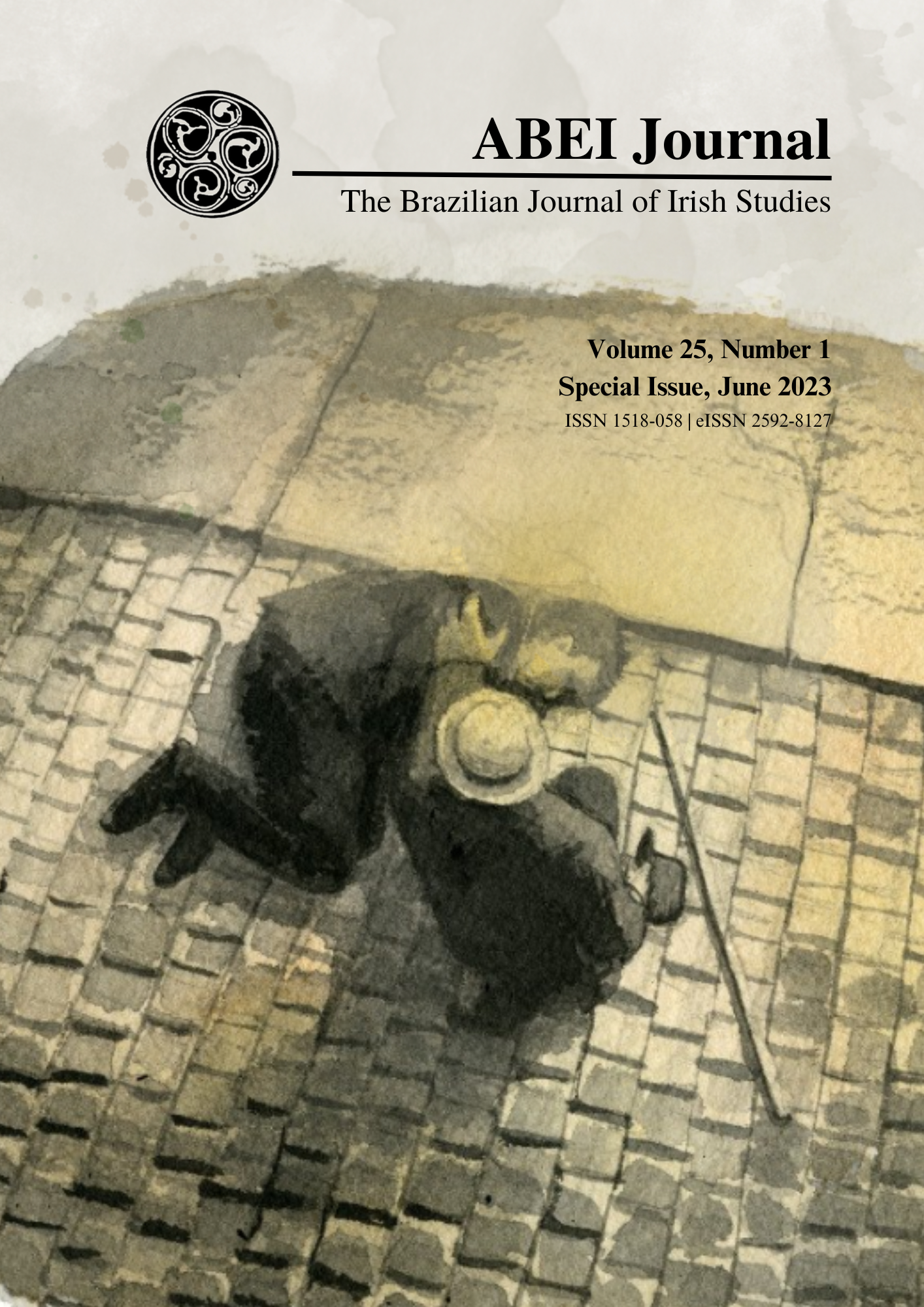Eating With Bloom on the Sixteenth of June: Food in Ulysses
DOI:
https://doi.org/10.11606/issn.2595-8127.v25i1p117-129Keywords:
Bloomsday, Leopold Bloom, Food StudiesAbstract
Food is not only a biological need but also a socio-cultural phenomenon. Though food is a vital need for people to survive, it does not only contain taste and ingredients, but contains other things like emotions, symbols of identity, power relations, gender roles, economy and social rules. Food choices affect lots of areas in the society and the life of individuals. This article will analyze the use of food in James Joyce’s Ulysses through its ordinary hero Leopold Bloom. The novel, as the epic of the body, uses food as a reflection of everyday life and grotesque realism. Moreover, food is used throughout the novel to exemplify Bloom’s personal and social identity. Bloom is a pacifist, nontraditionally masculine man, half Irish, half Jewish and also feels like an outsider in Dublin. All these aspects are narrated in Ulysses through the food he chooses to eat. Joyce has created a novel about life with all its aspects, including food.
References
Adams, Carol J. Etin Cinsel Politikası: Feminist-Vejeteryan Eleştirel Kuram. Translated by Tezcan Güray and Boyacıoğlu Mehmet Emin, Ayrıntı, 2015.
Adkins, Peter. “The Eyes of That Cow: Eating Animals and Theorizing Vegetarianism in James Joyce’s Ulysses.” Humanities, vol. 6, no. 3, 2017, p. 46., https://doi.org/10.3390/h6030046.
Bakhtin, Mikhail M. Rabelais and His World. Translated by Iswolsky Hélène, Indiana University Press, 1984.
Barthes, Roland. “Towards a Psychology of Contemporary Food Consumption.” Food and Culture: A Reader, edited by Carole Counihan, and Penny Van Esterik, 3rd ed., Routledge, 2013, pp. 23–31.
Blamires, Harry. Bloomsday Kitabı - Adım Adım Ulysses. Translated by Armağan Ekici, Norgunk Yayıncılık, 2021.
Bourdieu, Pierre. “Distinction: A Social Critique of the Judgement of Taste.” Food and Culture: A Reader, edited by Carole Counihan and Penny Van Esterik, 3rd ed., Routledge, 2013, pp. 31–40.
Counihan, Carole, and Penny Van Esterik. “Why Food? Why Culture? Why Now? Introduction to the Third Edition.” Food and Culture: A Reader, edited by Carole Counihan, and Penny Van Esterik, 3rd ed., Routledge, 2013, pp. 1–19.
Douglas, Mary. “Deciphering a Meal.” Food and Culture: A Reader, edited by Carole Counihan and Penny Van Esterik, 4th ed., Routledge, 2019, pp. 29–48.
Douglas, Mary. “The Abominations of Leviticus.” Food and Culture: A Reader, edited by Carole Counihan, and Penny Van Esterik, 3rd ed., Routledge, 2013, pp. 48–59.
Daniel, Carolyn. Voracious Children: Who Eats Whom in Children’s Literature. Routledge, 2016.
Ellmann, Maud. “The Epic of Human Body.” A Companion to James Joyce, edited by Richard Brown, Wiley and Blackwell, 2011, pp. 72–90.
Fisher, Maryanne. “The Relationship between Sex and Food.” Psychology Today, Sussex Publishers, 9 Feb. 2011, https://www.psychologytoday.com/intl/blog/loves-evolver/201102/the-relationship-between-sex-and-food.
Fischler, Claude. “Food, Self and Identity.” Social Science Information, vol. 27, no. 2, 1988, pp. 275–292., https://doi.org/10.1177/053901888027002005.
Joyce, James. Ulysses. Penguin, 1992.
Kiberd, Declan. Introduction. Ulysses, Penguin, 1992, pp. ix-lxxxi.
---. Ulysses Ve Biz. Translated by Zeynep Çiftçi Kanburoğlu, Alfa Yayınları, 2017.
Levy, Phyllis Joyce Cohen. “The Image of the Jew in James Joyce’s Ulysses.” University of Richmond Scholarship Repository, 1968.
Lupton, Deborah. Food, the Body and the Self. SAGE Publications, 1996.
Meyer-Rochow, Victor Benno. “Food Taboos: Their Origins and Purposes.” Journal of Ethnobiology and Ethnomedicine, vol. 5, no. 1, 2009, pp. 5–18., https://doi.org/10.1186/1746-4269-5-18.
Montresor, Jaye Berman. “Joyce ‘s Jewish Stew: The Alimentary Lists in Ulysses.” Colby Quarterly, vol. 31, no. 3, Sept. 1995, pp. 194–203.
Gold, Moshe, et al. “A Table for One: Hunger and Unhomeliness in Joyce’s Public Eateries.” Joyce Studies Annual 2010, Fordham University Press, 2011, pp. 71–98.
Stefon, Matt, and Yehudi A. Cohen. “Dietary Law.” Encyclopædia Britannica, Encyclopædia Britannica, Inc., 30 May 2018, https://www.britannica.com/topic/dietary-law.
Downloads
Published
Issue
Section
License
Copyright (c) 2023 Esra Öztarhan

This work is licensed under a Creative Commons Attribution-NonCommercial 4.0 International License.


